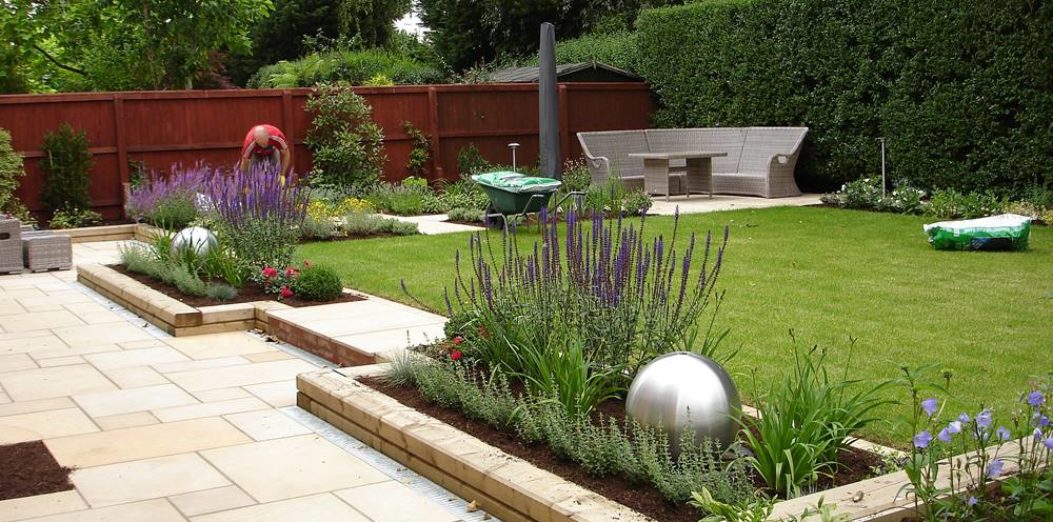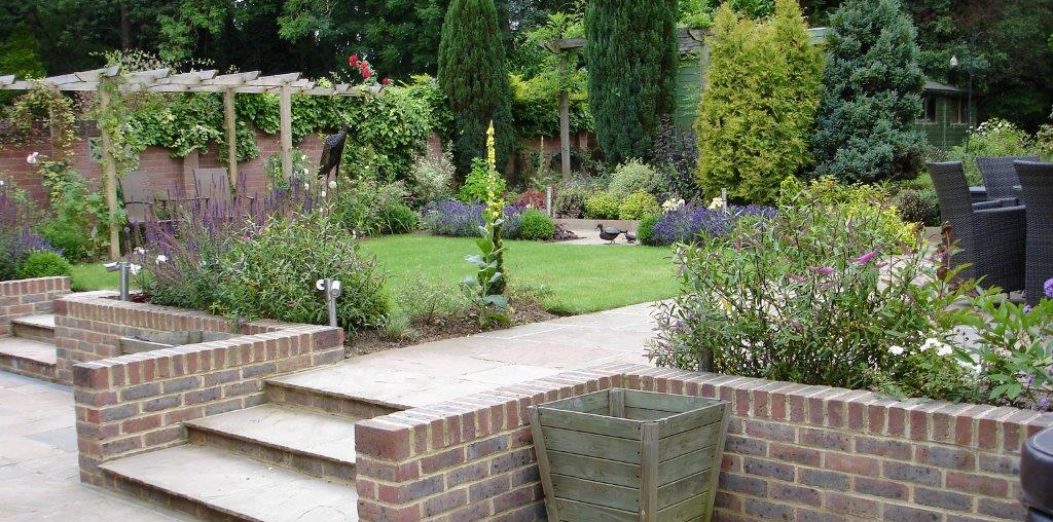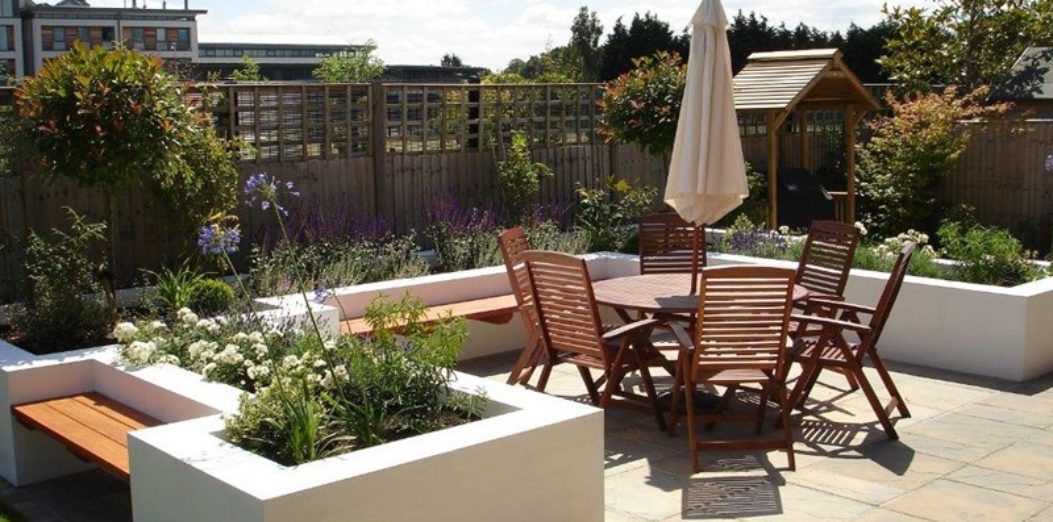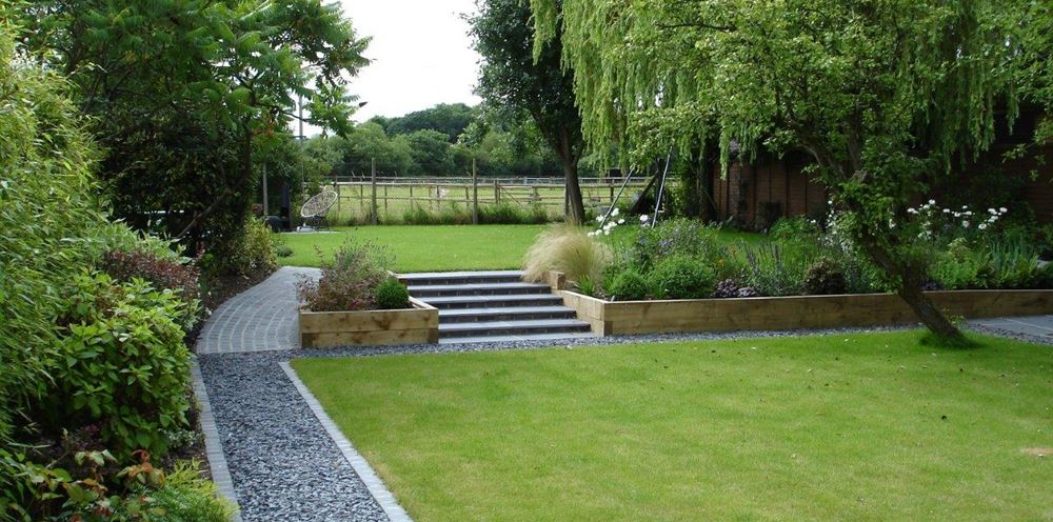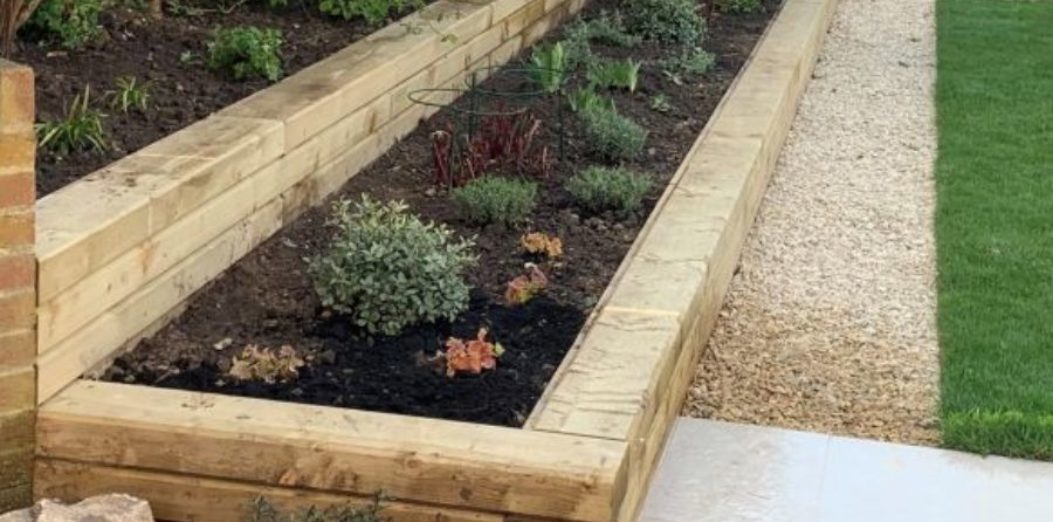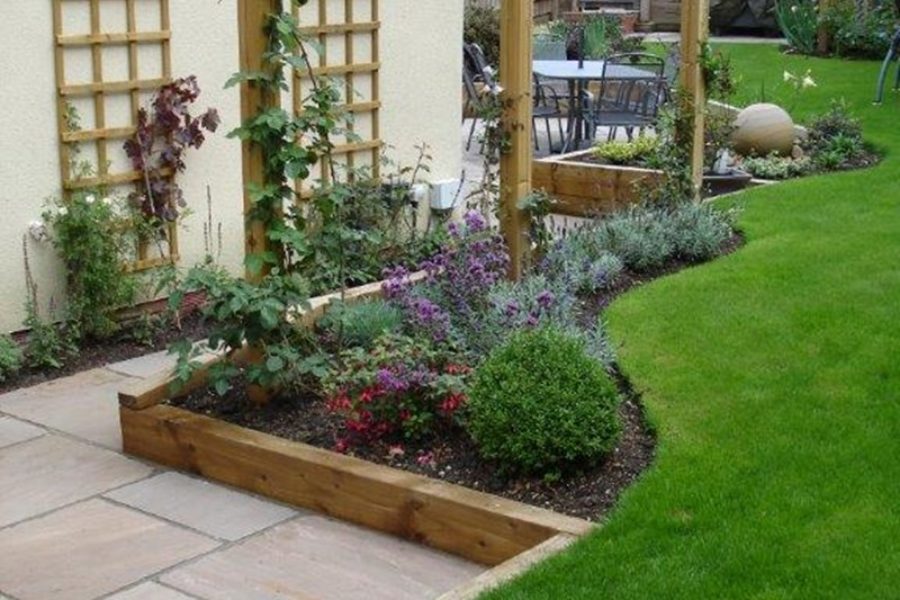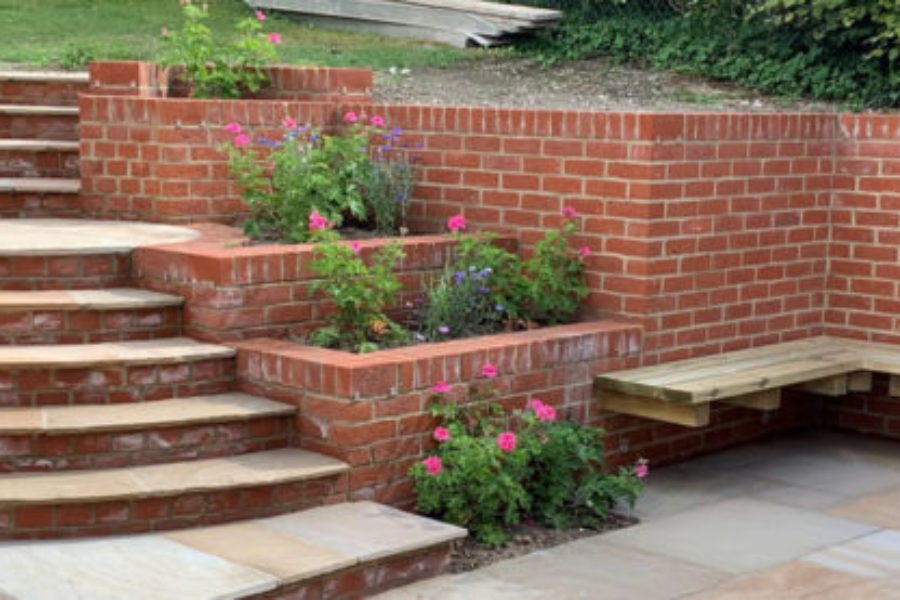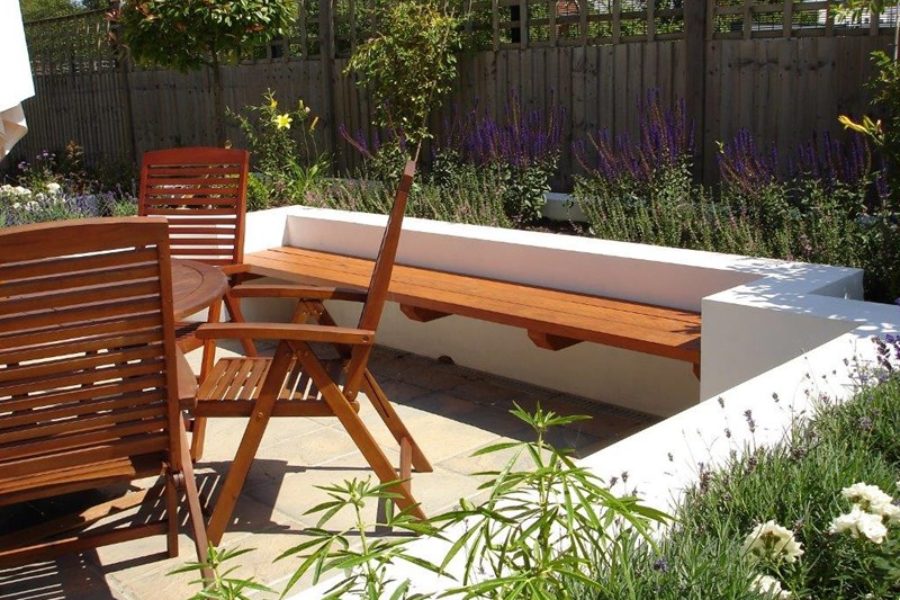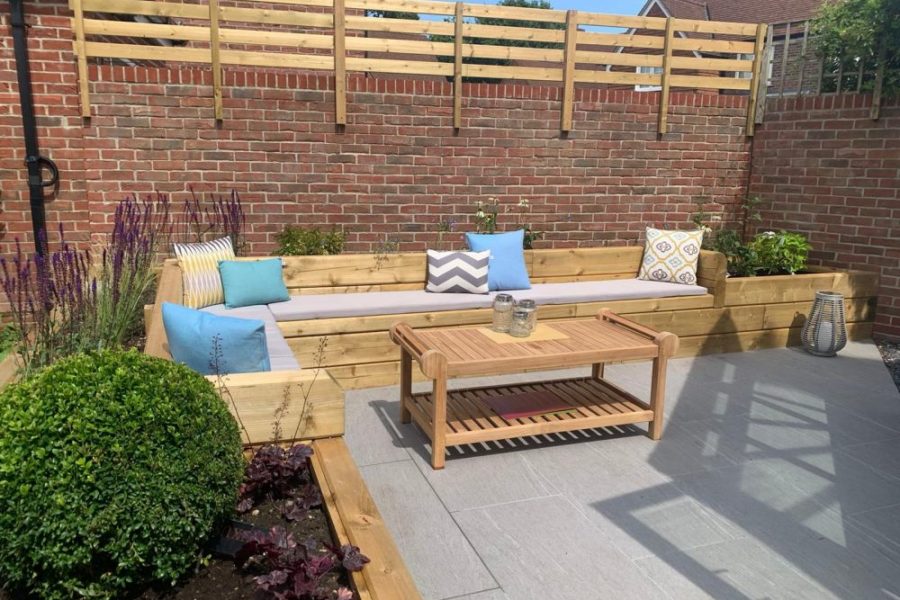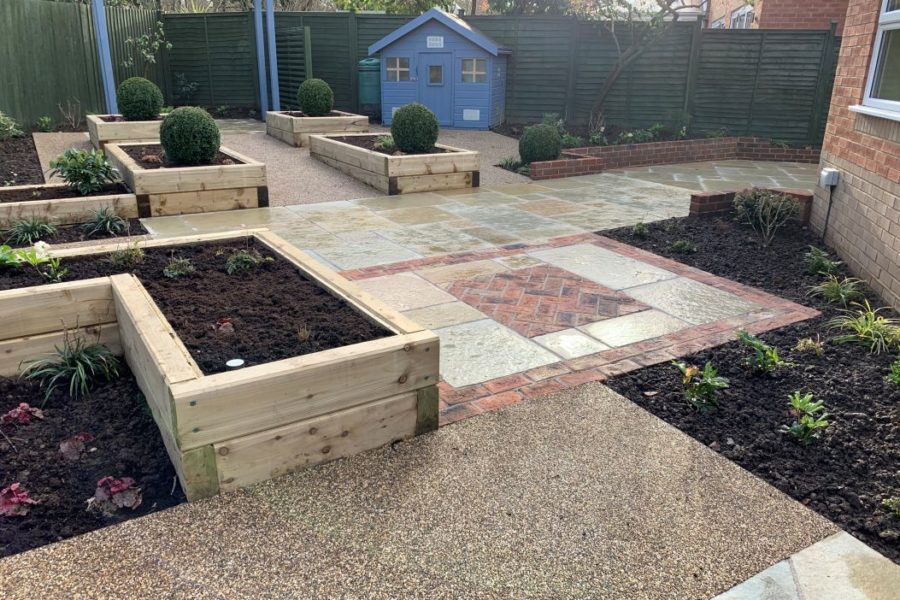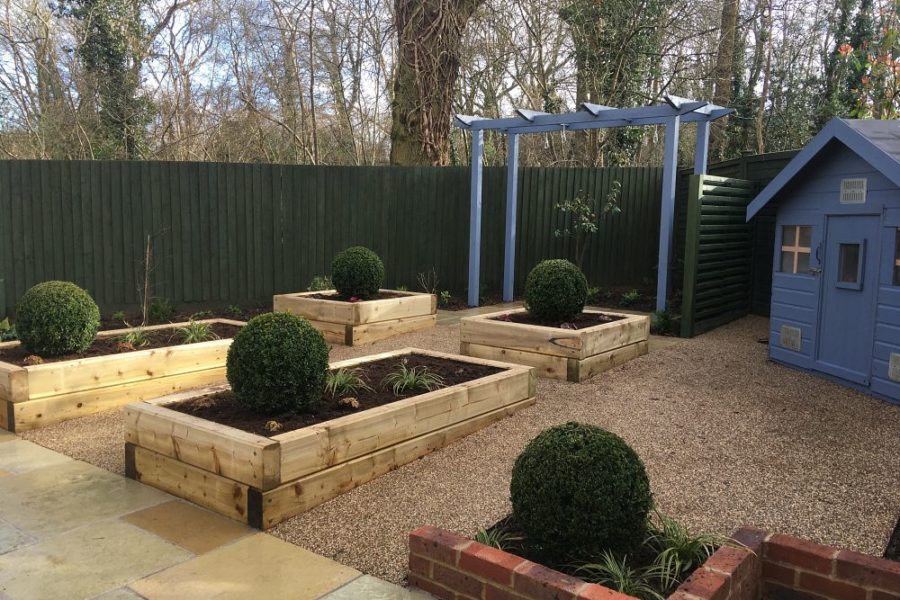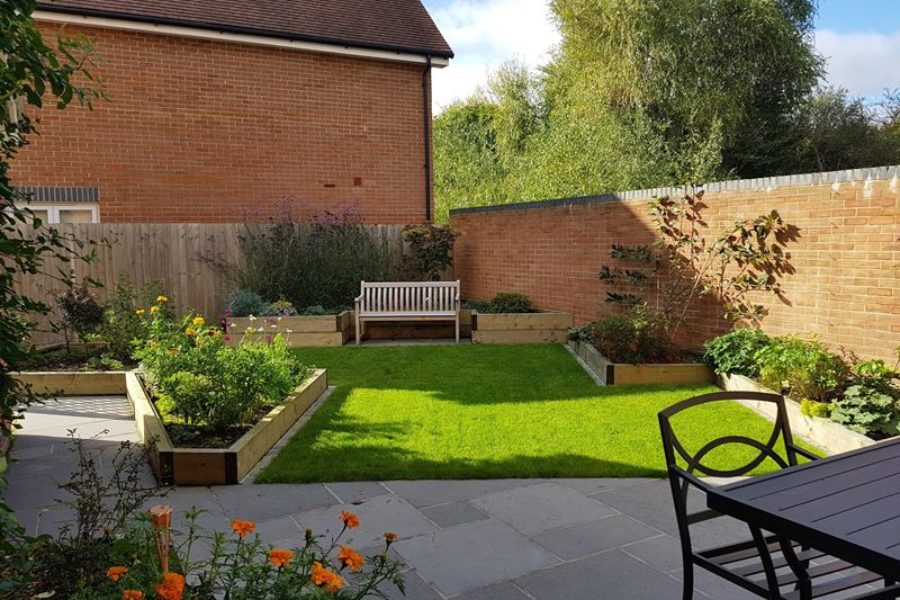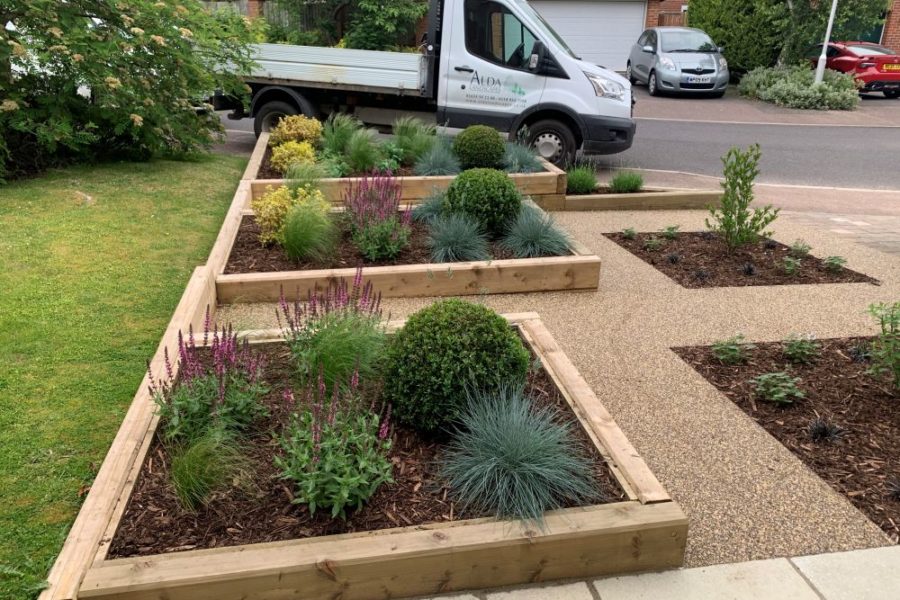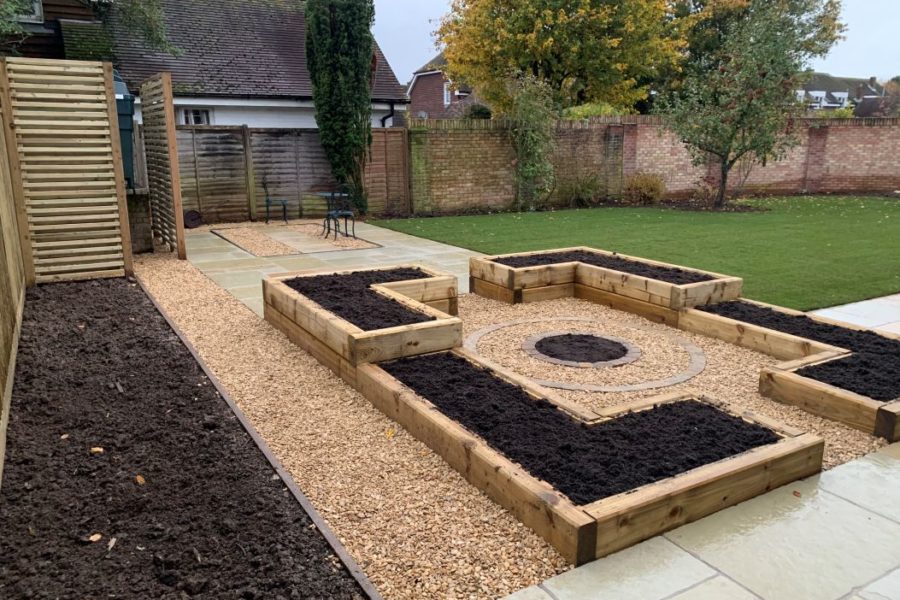Raised Beds – Thoughts From A Designer
We build a lot of raised beds at ALDA landscapes. In fact, the majority of gardens we work on feature raised beds in some form or another. Read on for an in-depth look at their benefits and practicalities.
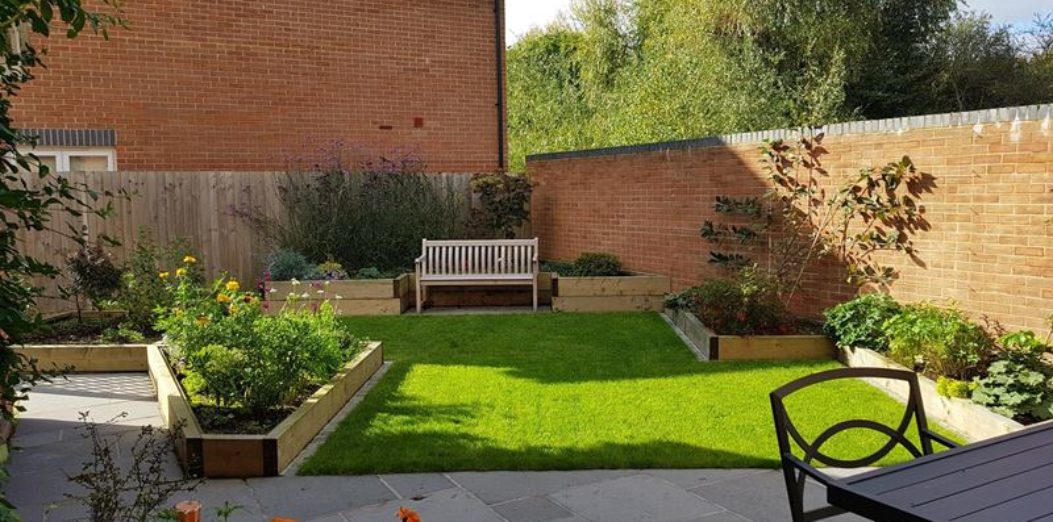
If you look at photos of our gardens – and the work of other garden designers – you’ll notice that many feature raised beds.
So why do we love raised beds so much? This post answers that question, looking at their advantages and offering some practical considerations for anyone building or commissioning raised beds.
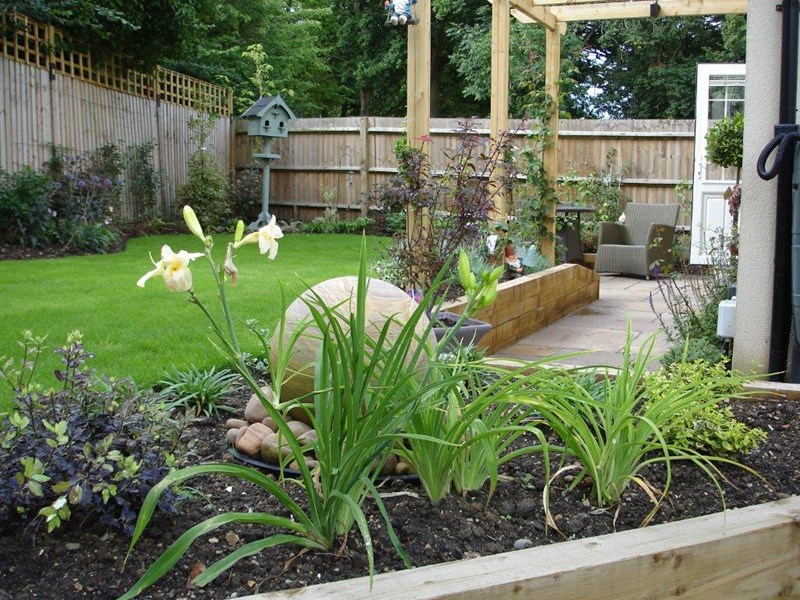
Plants Grow Well In Raised Beds
Historically, the main reason we used raised beds was simply so that our clients could grow plants – often vegetables, but ornamental plants too.
The fact is, plants grow well in raised beds and here’s why:
- They provide improved drainage for plants
- You can control the type and quality of the soil to suit your plants
- The soil is less compacted, which is great for plant root development
- The soil warms up quicker in spring, so plants can get get off to an early start
- They provide greater soil depth to plant in
The last point is an important one if there is an area in the garden which is unsuitable for growing. An example of this is the soil next to conifer boundaries, which is always incredibly dry and rooty – not easy places to grow anything in. A simple sleeper bed used here can provide enough soil depth to grow plants which otherwise would not flourish, and the raised bed itself can be hidden within the border if required, with planting in front of it.
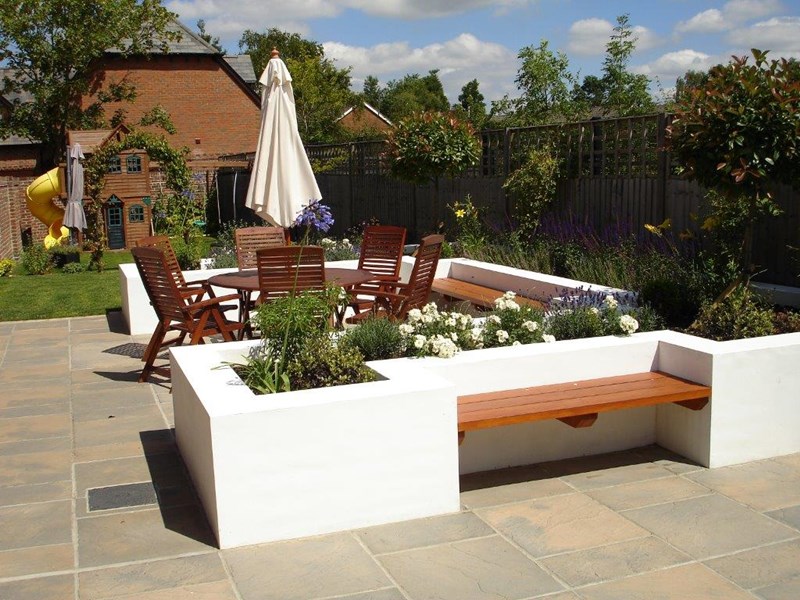
Raised beds are great for garden design
As a garden designer there are plenty of other reasons for incorporating raised beds into garden plans other than simply growing plants:
- Many clients just like the look of them. Contemporary designs with raised beds with rendered white walls and inbuilt seating are uber fashionable at the moment and feature in every glossy magazine, and indeed our gallery page!
- Raised beds can also be helpful in terms of dividing a garden and / or as part of a formal design.
- Even without inbuilt seating, raised bed walls can make good places to perch (whether intended for this use or not).
- They can be very useful when trying to do some screen planting, because they give any plants an added bit of height.
- On a sloping site which is being levelled or terraced, the resulting raised beds help soften what might otherwise be a lot of stark hard landscaping, and potentially break what might be some dangerously high walls into a number of safer drops.
- They are easy to access and maintain for anyone with physical or mobility problems.
What Materials Should I Use?
There are a number of considerations when designing a raised bed, the first one being materials – inevitably this is also linked to cost!
Brick and stone raised beds look great, but require skills to build and are therefore pricey.
The white rendered walls above require a concrete block construction, which is then beautifully rendered, and then painted – again this requires skill and time (and also some dry weather) = expense! These walls also require quite a bit of maintenance (e.g. routine painting), especially as birds like to leave their mark on them(!), and under trees, the walls will go green.
Timber can be useful, as it is less costly and takes various forms. Some clients don’t like basic treated softwood sleepers, but we like to use planed (smooth) and bevelled sleepers, which give a very attractive finish. And for veggie beds, particularly where space is limited, we often suggest using planed 9”x2” boards instead. Timber, of course, doesn’t last as long as some other materials, but will last longer if the beds are lined with heavy duty polythene, and if the timber is given an annual timber treatment (we like to use Protek’s water based green timber products). There are of course other options (Gabions, log palisade etc), but these tend to have limited appeal.
What Dimensions Should I Go For?
The height and width of a raised bed are important, and should be tailored towards your practical and design needs.
If the walls of the raised bed are to be sat on, then a height of around 450mm is usually a comfortable height (unless the client is very tall!), but needs vary a lot. This is also a good height for people who have back problems (like myself) and who may wish to kneel and lean over the raised bed. 150mm is considered the absolute minimum height in terms of depth of soil.
Whilst raised beds can be any width, if working from the side of a raised bed around 450-500mm is considered a comfortable reach (without physically getting into / onto the bed), so assuming the bed is reachable from all sides, this suggests a sensible width of around 900mm-1m. This is not very wide if the raised bed is constructed from sleepers, which is one of the reasons we often suggest 9”x2” timbers instead. The length of the raised bed is also a factor – long beds normally mean a long walk to get round them!
What About Location?
Clearly this is important when growing fruit and vegetables! But the same applies to ornamental plants. Consider the amount of sunlight the bed will get, and also how exposed the location is. And don’t forget that many vegetables and ornamental plants will need a lot of watering in hot, dry spells – so make sure you’ve got a water supply somewhere close to hand.
And Finally…
… one thing that everyone overlooks when thinking about raised beds is the amount of soil and compost – and time and cost – it takes to fill them. Even a medium sized raised bed takes a lot of filling! That’s a lot of wheelbarrowing… but of course its worth all the effort by the time its finished!
